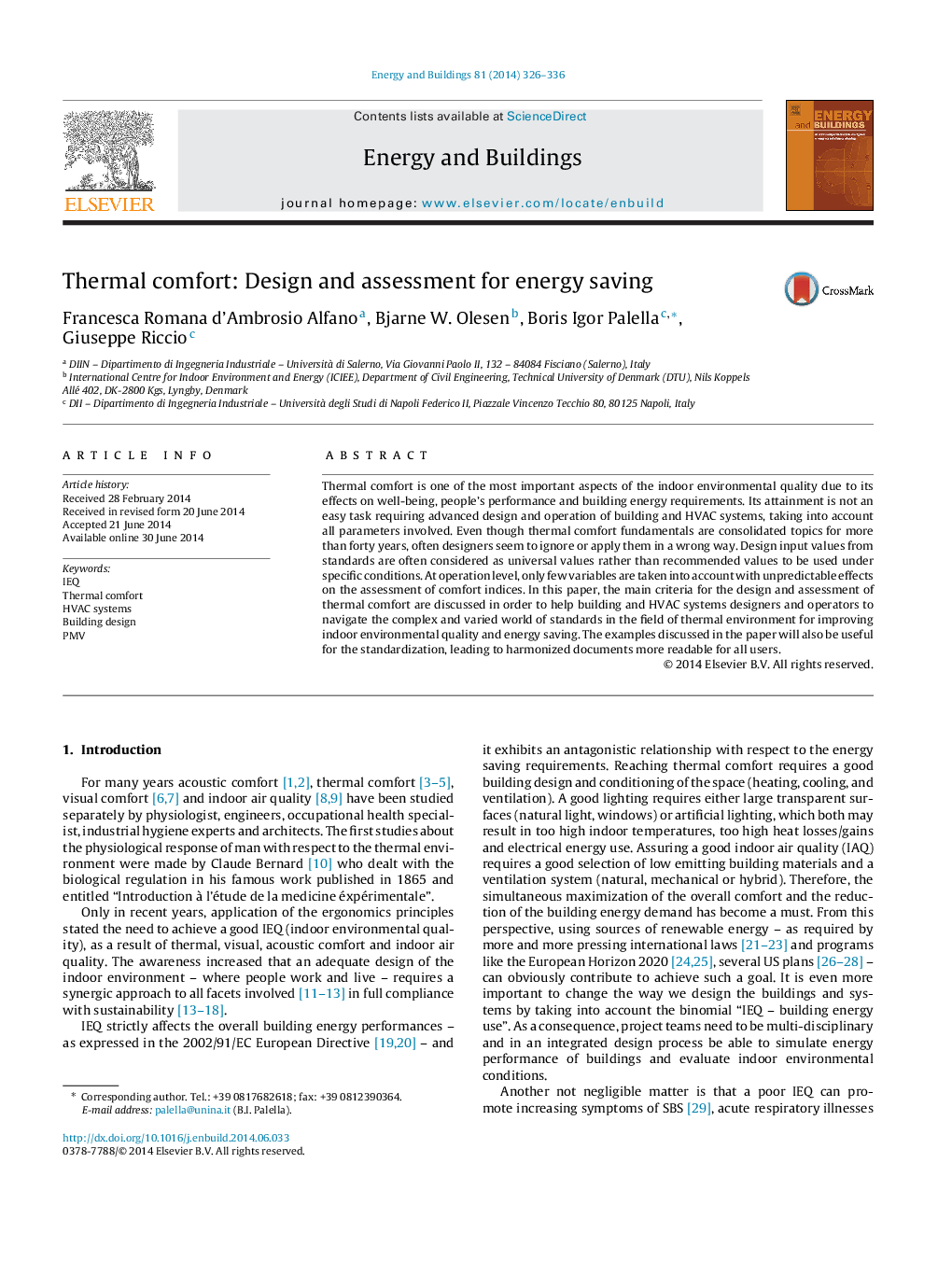| کد مقاله | کد نشریه | سال انتشار | مقاله انگلیسی | نسخه تمام متن |
|---|---|---|---|---|
| 262841 | 504051 | 2014 | 11 صفحه PDF | دانلود رایگان |
• We discuss criteria for designing HVAC systems for thermal comfort and energy saving.
• We stress the need of a high competence required to deal with thermal comfort issues.
• We analyze effects of wrong or incomplete input data on design and verification.
• We discuss procedure required for comfort indices.
• Best practice rules to navigate in the complex world of standards are proposed.
Thermal comfort is one of the most important aspects of the indoor environmental quality due to its effects on well-being, people's performance and building energy requirements. Its attainment is not an easy task requiring advanced design and operation of building and HVAC systems, taking into account all parameters involved. Even though thermal comfort fundamentals are consolidated topics for more than forty years, often designers seem to ignore or apply them in a wrong way. Design input values from standards are often considered as universal values rather than recommended values to be used under specific conditions. At operation level, only few variables are taken into account with unpredictable effects on the assessment of comfort indices. In this paper, the main criteria for the design and assessment of thermal comfort are discussed in order to help building and HVAC systems designers and operators to navigate the complex and varied world of standards in the field of thermal environment for improving indoor environmental quality and energy saving. The examples discussed in the paper will also be useful for the standardization, leading to harmonized documents more readable for all users.
Journal: Energy and Buildings - Volume 81, October 2014, Pages 326–336
